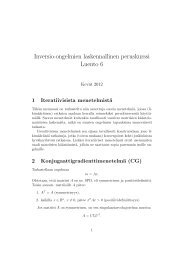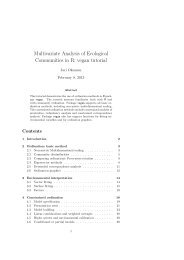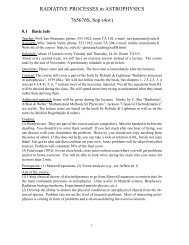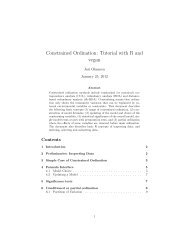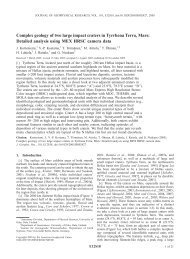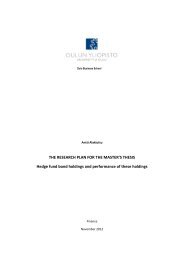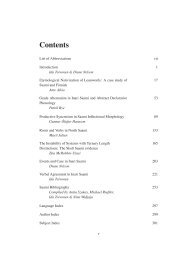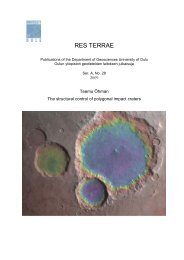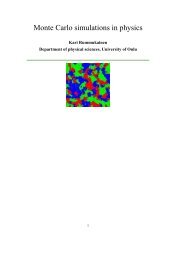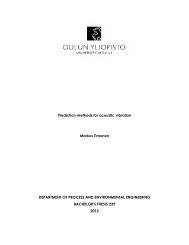Juha Köykkä - Oulu
Juha Köykkä - Oulu
Juha Köykkä - Oulu
- TAGS
- juha
- oulu
- cc.oulu.fi
Create successful ePaper yourself
Turn your PDF publications into a flip-book with our unique Google optimized e-Paper software.
Res Terrae, Ser. A 32, J. <strong>Köykkä</strong>, Sedimentology of the Mesoproterozoic Telemark basin-fills, South Norway: implications for<br />
sedimentation processes, depositional environments and tectonic evolution<br />
5 Review of the original papers<br />
Paper I<br />
Paper I focuses on an area near the town of Rjukan, in Telemark, southern Norway<br />
(Fig. 3). The paper presents the results on the sub-Heddersvatnet unconformity and the<br />
volcanic-sedimentary Heddersvatnet and Vemork formations (Fig. 4). The main con-<br />
tributions of Paper I are (i) a revision of the nature of the sub-Heddersvatnet uncon-<br />
formity, (ii) a lithostratigraphic correlation of the Heddersvatnet and Vemork forma-<br />
tions, and (iii) a geochemical and paleotectonic reconstruction of the Heddersvatnet<br />
formation basaltic lavas. The paper is based on sedimentological and geochemical la-<br />
boratory work that was carried out in 2007–2008.<br />
One of the most controversial problems of the Telemark supracrustal rocks is the<br />
nature and significance of the lithostratigraphic contacts between the Rjukan and Vin-<br />
deggen groups and between the Tuddal, Vemork and Heddersvatnet formations<br />
(Wyckoff, 1934; Dons, 1960a, 1960b; Dahlgren, 1990a; Starmer, 1993; Menuge and<br />
Brewer, 1996; Brewer and Menuge, 1998). Earlier studies concluded that a regionally<br />
large angular unconformity exists between the Rjukan and Vindeggen Groups (Wyck-<br />
off, 1934; Dons, 1960a, 1960b), but this conclusion was subsequently called into ques-<br />
tion by Starmer (1993), Menuge and Brewer (1996), and Brewer and Menuge (1998).<br />
Dahlgren et al. (1990a) stated that the Vemork Formation represents the initial volcan-<br />
ism and sedimentation of the Vindeggen Group. Brewer and Menuge (1998) consider<br />
the Rjukan and Vindeggen groups to be one succession, within which the discordance<br />
of individual units is a function of the mode of deposition in the context of important<br />
tectonic changes in the evolution of the Rjukan Rift Basin. Recently, Laajoki (2005)<br />
studied the areal distribution and nature of the sub-Heddersvatnet unconformity, and<br />
Laajoki and Corfu (2007) subdivided the Vemork Formation into smaller lithostrati-<br />
graphic units while discussed its relationship with the Tuddal Formation and the Vin-<br />
deggen Group. Paper I addresses this controversy with new field-based lithostrati-<br />
graphic, sedimentological and geochemical evidence, which also provided the frame-<br />
work for Paper II.<br />
In Paper I, 14 basaltic lava samples were collected from the Heddersvatnet Forma-<br />
tion to characterize their geochemical signature. The XRF results were used to com-<br />
50



